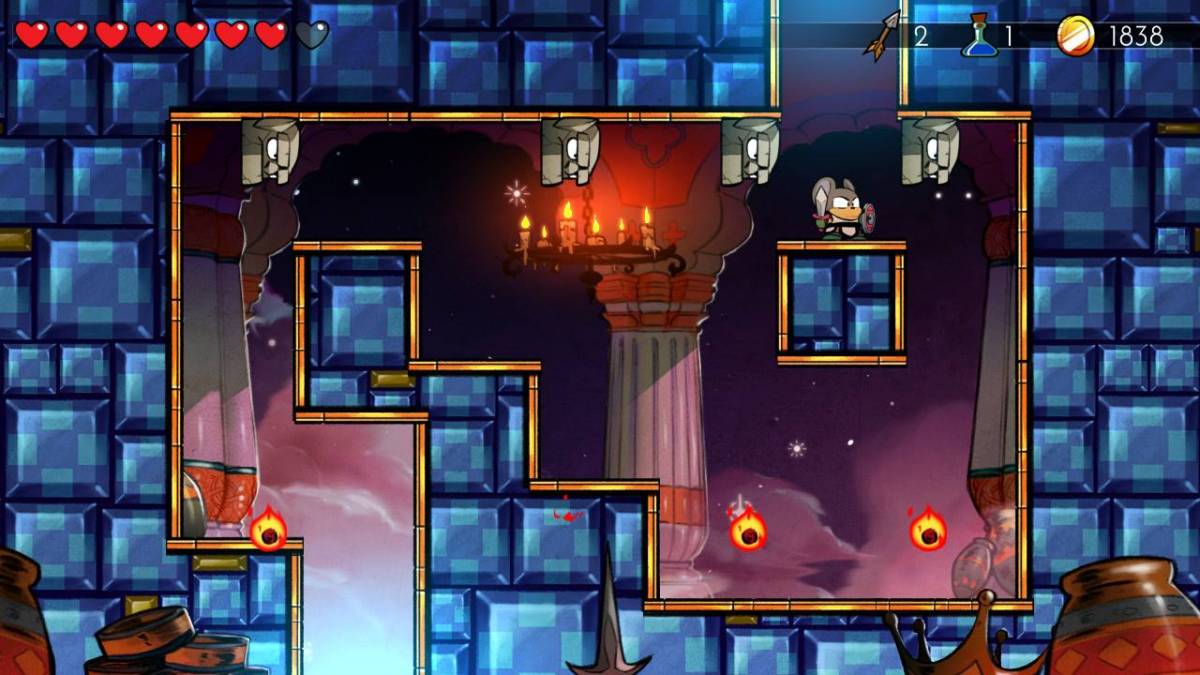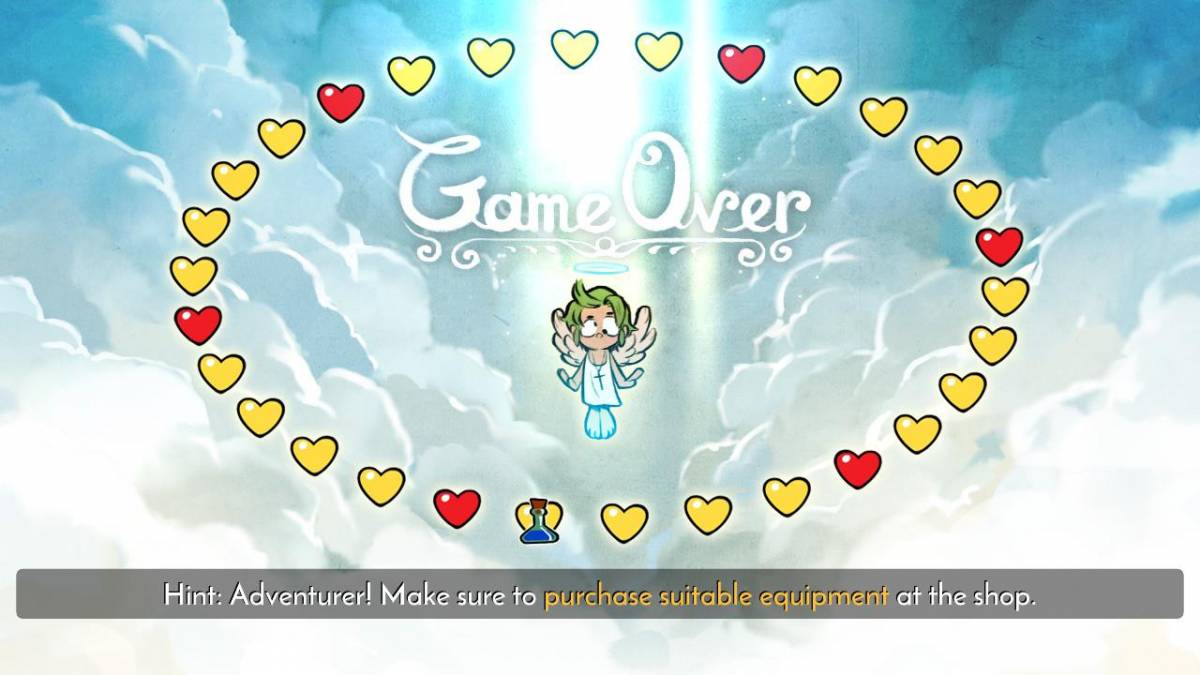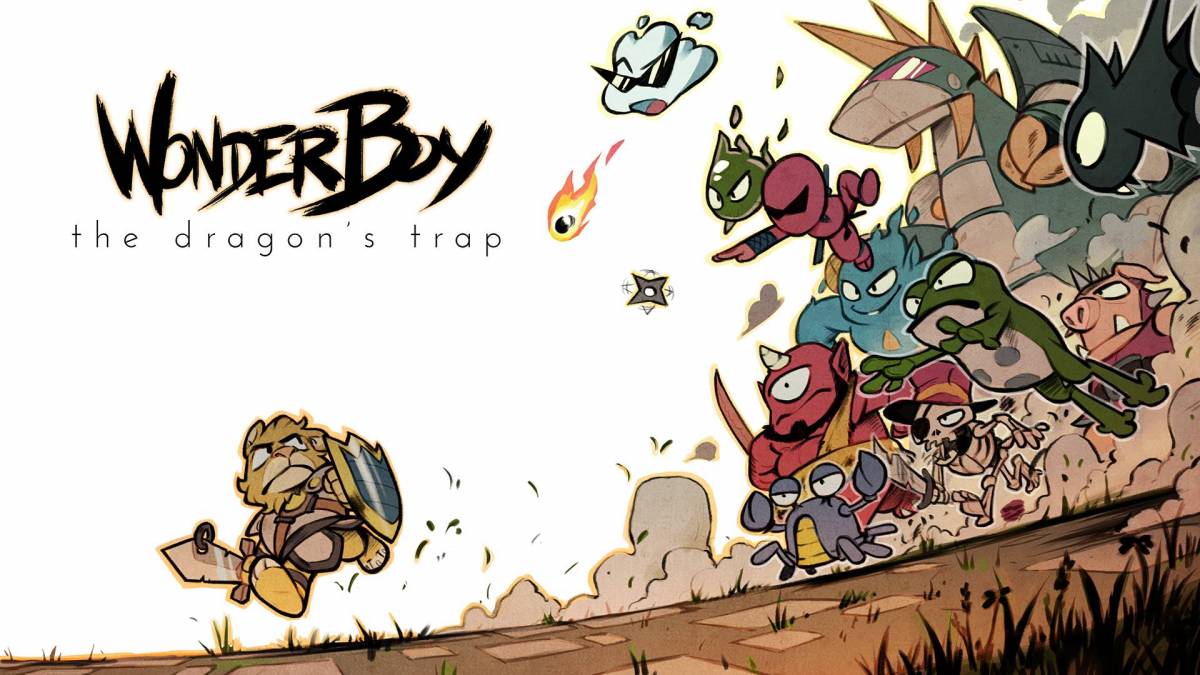Wonder Boy: The Dragon’s Trap, originally developed by Westone Bit Entertainment, has made its way to current-gen consoles with a fresh lick of paint and a new, orchestrated soundtrack. Published by Sega in 1989 for the Master System, it also made an appearance on the Turbo Grafx-16/ PC Engine and the Game Gear where it finally settled on the name it currently holds. This title is/was the third in the Wonder Boy series but don’t be dismayed, as it isn’t necessary to have a knowledge of the previous games.
In fact, you start on the final level of Wonder Boy in Monster Land where you must defeat the Meka Dragon who’s been up to no good. However, calamity ensues and you are transformed into Lizard Man. This, and many other transformations become the crux of the game and as you make your through the transformations, different areas of the game will become available to you. There is a wide variety in the areas you explore but some overused assets reveal the game’s age in an unflattering manner.

The most difficult question you have to ask yourself when remaking an older title is “how faithful should you be to the original?” The answer in this instance? “Less faithful than that.” With the limitations of older hardware, level design sometimes had to sacrifice complexity. However, when given the chance to start from scratch, it would be nice to see how a passionate new development team could have reiterated some of the more tired stages. Some of the best platforming is to be found in the post-game section which has been developed by Lizardcube themselves, making it more frustrating they didn’t tinker with the rest of it. On a broader scale, the semi-contextual world map of Wonder Boy is well laid out, except for the jarring layout of the tower which you will visit and revisit until you are almost sick of the sight of it.
I say “almost” because it is impossible to hate anything aesthetically about this game. The hand-drawn artwork is possibly the best to be seen in any game currently on the market. The attention to detail in every aspect, from the glow on Lizard Man’s snout as he breathes fire, to the gargantuan statues in the transformation rooms, would bring a wry smile to the stoniest of complexions. Comparing these graphics to the original, which can be viewed in-game via the retro settings, it is clear to see that a herculean task was undertaken to bring the world of Monster Land to life in 2017.

It isn’t just a case of freshening up the visuals either, as there is literally no comparison to be made between some of the scenes you get the privilege to witness here and the pixelated neon blocks of yore. All of this is scored with a beautiful soundtrack composed by Michael Geyre, invoking the essence of epic fantasy and complementing it with an upbeat innocence which doesn’t get old. Each level has a unique sound and every one of them is inviting which is a blessed relief as you may find yourself going through those areas over and over again.
On the topic of replaying the same areas multiple times, there are few things in a video game as annoying then seeing a Game Over screen because of frustrating mechanics. Enemy layout coupled with a lack of feedback can cause some pretty frustrating scenarios. When your character is hit there is a brief moment of translucent invincibility seen so often in video games. However with Wonder Boy: The Dragon’s Trap, coming into contact with any creature or projectile prolongs this paralysis for, occasionally, coma- inducing periods of time. The enemies themselves are all very simple by design and vary little in their attacks. Sometimes a fireball will fly just under your shield to hit your feet while you are at an awkward height trying to fight several other creatures who are vying for your attention. Too often it becomes a case of taking a hit in order to phase through the enemy because the only alternative is launching your controller at the wall.

Your reward for trudging through these levels is always an underwhelming boss fight with a dragon. While each of the dragons look very different, from pirates to vampires, they’re attacks are simple and provide little challenge bar the obvious frustration that accompanies many moments in the game. Dying in a boss battle forces you to go through the laborious task of traversing the entire level again, with a 20% chance you’ll get a revive potion upon respawn. It’s hard to be too angry with the game when it looks so charming but it really tests the limit.
As far as story is concerned, the game is bookended by brief descriptions of events. As with most side-scrolling adventure games, the gameplay is most important. Sadly it just happens to be gameplay over twenty years out of date. You could even argue that it would be a better game if you removed all combat and added more obstacles and platforming.
If you’re looking for the areas in which Wonder Boy: The Dragon’s Trap falls short, you can look back to the original title and find clunky, outdated gameplay. However, everything that has been altered by Lizardcube is truly excellent. I really hope they go on to make an original title after this as they have done a lot of great work here. The score is most pleasing and the aesthetic sublime, but gameplay is so important and here it leaves you wanting.
Review copy provided by PR
Some of the coverage you find on Cultured Vultures contains affiliate links, which provide us with small commissions based on purchases made from visiting our site. We cover gaming news, movie reviews, wrestling and much more.



